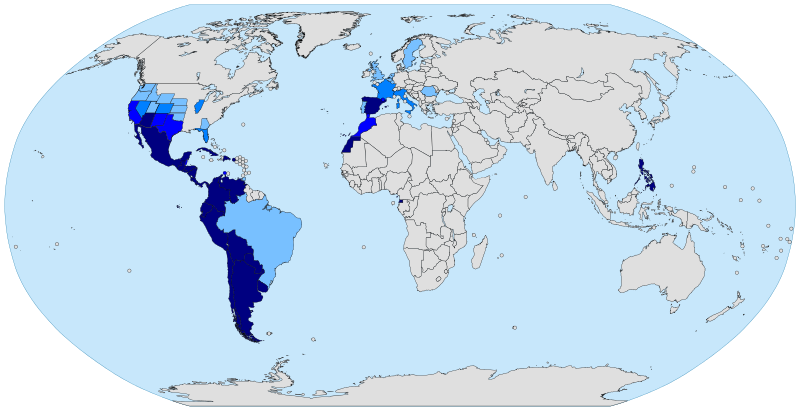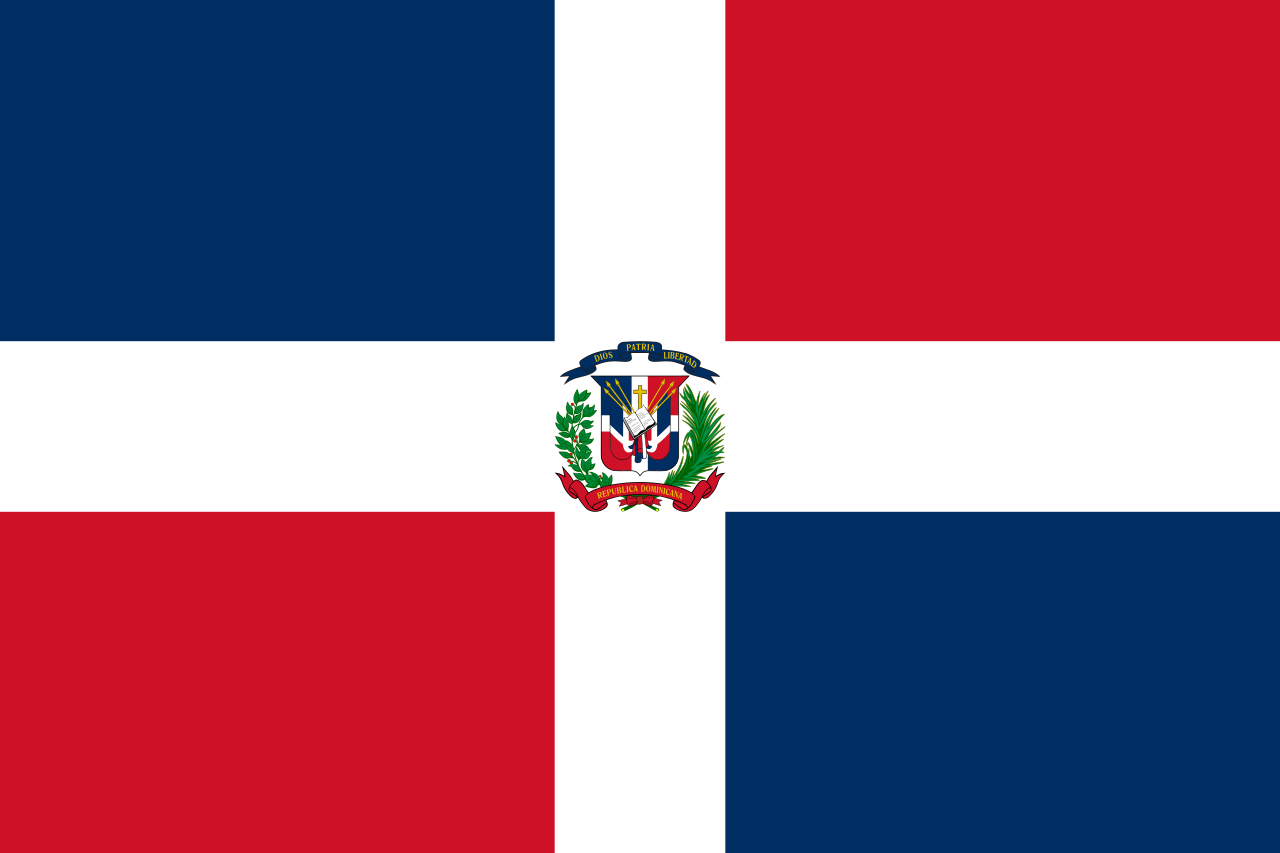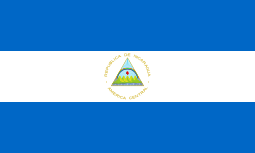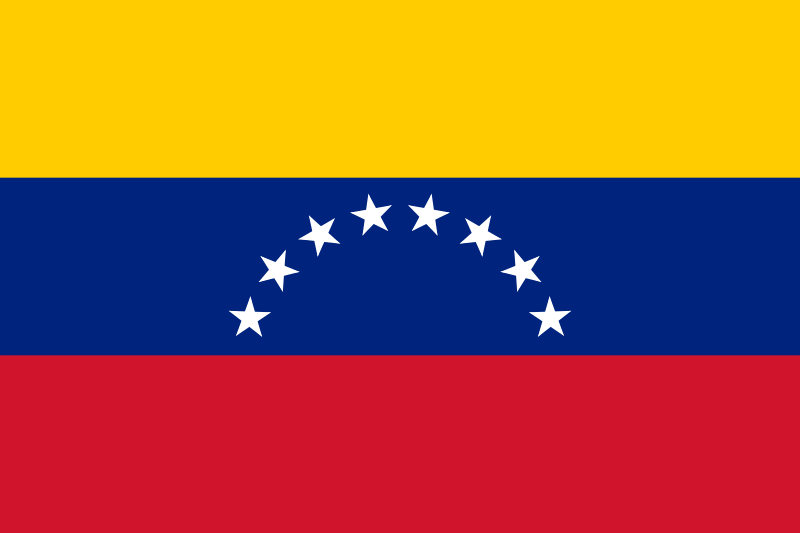5.7: Las nacionalidades
- Page ID
- 44562
Los países hispanos y las nacionalidades

In these countries, Spanish is the official language, or is the principal language used for communication. For this reason, the United States is not on the list, but it should be noted that with approximately 41 million Spanish-speaking residents, the U.S. has roughly the same number of Spanish-speakers as Honduras, Paraguay, El Salvador, Nicaragua, Costa Rica, Panama, Uruguay, and Equatorial Guinea combined.
Nationalities are not capitalized in Spanish. They do need to agree with the person or group that they describe in gender and number.
Argentina……………………...argentino/a/os/as
Bolivia…………….…………..boliviano/a/os/as
Chile…………………....……….chileno/a/os/as
Colombia…………...….…...colombiano/a/os/as
Costa Rica……………………...costarricense(s)
………………………………………tico/a/os/as
Cuba...…………………………...cubano/a/os/as
Ecuador…..…………………ecuatoriano/a/os/as
El Salvador...…………….…salvadoreño/a/os/as
España….español/española/españoles/españolas
Guatemala……………...…guatemalteco/a/os/as
Guinea Ecuatorial …..….ecuatoguineano/a/os/as
Honduras……………..……hondureño/a/os/as
México……………...………mexicano/a/os/as
Nicaragua………….…………nicaragüense(s)
Panamá…………………..…panameño/a/os/as
Paraguay………...…………paraguayo/a/os/as
Perú…………………………..peruano/a/os/as
Puerto Rico*..……….…puertoriqueño/a/os/as
……………………………………..boricua(s)
*territorio estadounidense
La República Dominicana..dominicano/a/os/as
Uruguay…………………..…uruguayo/a/os/as
Venezuela…………………venezolano/a/os/as
Actividad 20
¿De dónde son? We can learn a lot about a person by their nationality. For each person described below, write one sentence to say where they are from in Spanish. Then, discuss what the ending on the nationality also communicates to us.
1. Julieta es colombiana. ________
2. Ramón es peruano. ________
3. Samuel y Silvia son españoles.________
4. Sara y María son bolivianas.________
5. Mateo es argentino. ________
6. Ana Lucía es chilena.________
7. Francisco y Marcos son paraguayos. ________
Actividad 21
Las banderas. For each flag, you will see the country’s name, as well as a person’s name (or names). Write a sentence to describe the nationalities of these people.
 1. La República Dominicana/ Eugenio
1. La República Dominicana/ Eugenio
 2. Cuba/ David y Soraya
2. Cuba/ David y Soraya
 3. Nicaragua/ Daniela y Fabricio
3. Nicaragua/ Daniela y Fabricio
 4. Venezuela/ Fernanda
4. Venezuela/ Fernanda
Actividad 22
La nacionalidad versus la ascendencia. When a Spanish-speaker asks you about your “nacionalidad” they are asking about your home country (Think: What country would my passport come from?). Being a country of immigrants, part of the culture in the United States involves identifying strongly with our heritage in other countries, but miscommunications often occur when an American tells a Spanish-speaker something along the lines of, “Soy mexicana e irlandesa.” Instead, to speak about your cultural heritage, state your nationality first, then add additional information to talk about your heritage.
Also, a person from the United States is, officially, estadounidense. However, you are likely to hear norteamericano/a/os/as or americano/a/os/as out there in the real world. Because all peoples of the Americas are americanos in Spanish, norteamericano is a more respectful term in Central and South America. Americano is used commonly in Spain.
Follow the model below to express your own information in the box below. Then, share with a partner. Be prepared to share with the class.
If you don’t know the details of your heritage, you don’t have to bring it up at all. If someone asks you about it explicitly, you can just say, “No sé.”
Modelo: Hola, me llamo David. Yo soy norteamericano. Soy de ascendencia alemana, británica, y nativo americana.
Actividad 23
Preguntas personales. Answer the personal questions below, then interview a partner. Be prepared to share with the class.
1. ¿Cuál es tu nacionalidad?
2. ¿Conoces a alguna persona hispana?
3. ¿Cuáles son algunas de las culturas hispanas que forman una gran parte de la población hispana en los EEUU (Estados Unidos)?
4. ¿Has probado (have you tried) comida salvadoreña?
5. ¿Quiénes son algunas personas famosas que son de países hispanos? ¿De dónde son? ¿Cuál es la nacionalidad de cada persona?


